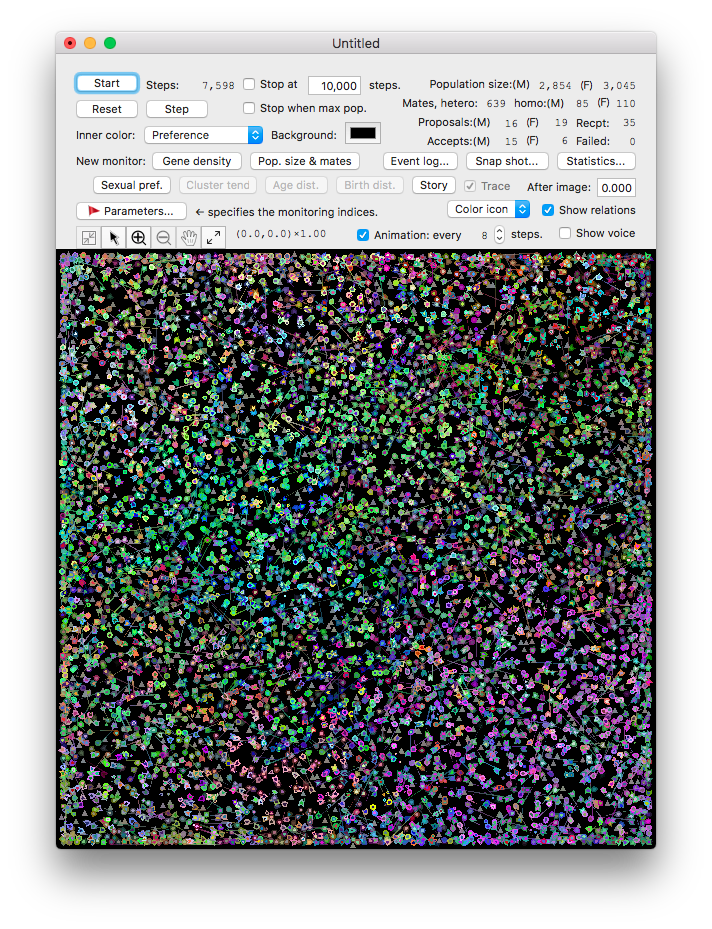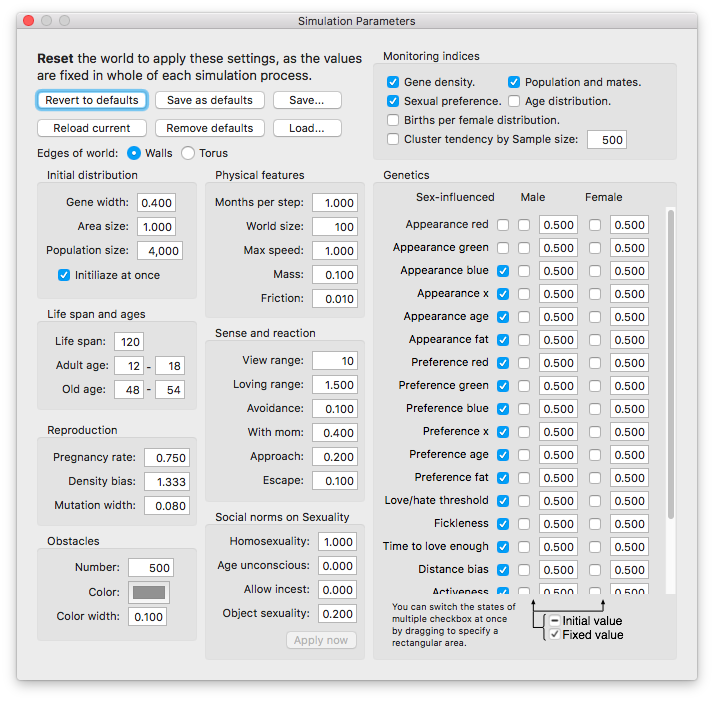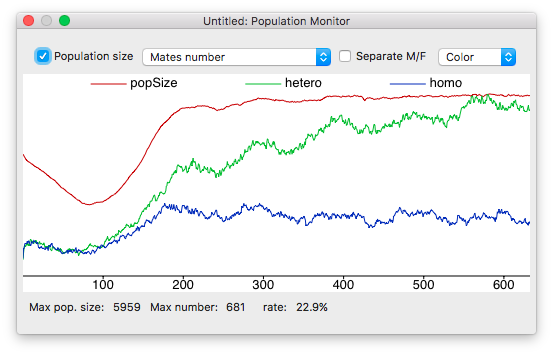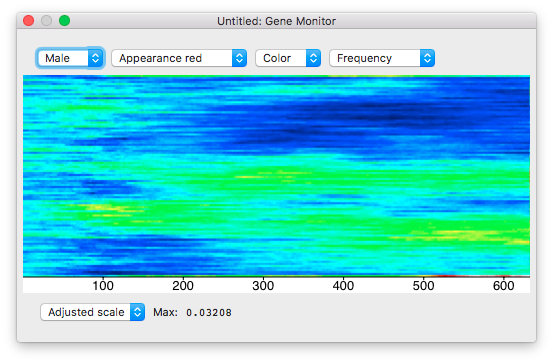LoversFlow2: An Individual-Based Evo-Eco Simulator on Sexual Dimorphism
by Tatsuo Unemi and Hiroaki MatsumotoStudies on evolution of sexual dimorphism are including useful suggestions to understand more deeply not only the ecological diversity in nature but also the gender diversity in human society. Here we present the design of our individual-based evo-eco simulator targeting an evolutionary process on sexual appearance, preference, and dimorphism, including sex-influenced traits. The simulator can manage some thousands of individual agents in continuous 2D space for birth, roaming, mating, reproduction, and death. It also has some auxiliary functions for monitoring and recording the evolutionary process for visualization and further statistical analysis. Accompanying with a detail of the mathematical model, some results are shown as example analysis concerning effects of distance bias and locality from view points of speciation and dimorphism.
Publications
- T. Unemi and H. Matsumoto, LoversFlow v2 : an individual-based evo-eco simulator on sexual dimorphism – A challenge toward evolutionary aesthetics, Proceedings of the 23rd International Symposium on Artificial Life and Robotics, pp. 295-300, Beppu, Japan, January 18-20, 2018. PDF
- H. Matsumoto and T. Unemi, A Study on Evolutionary Dynamics of Mating: Appearance and Distance, the 14th European Conference on Artificial Life, Late-Breaking Abstracts Booklet of the 14th European Conference on Artificial Life, pp. 11-12, Lyon, France, September 4-8, 2017. PDF
 Main window. |
 Control panel. |
 Population size and the number of mates.  Time sequence of gene density. |
Created on September 18, 2017. Updated on July 22, 2018.